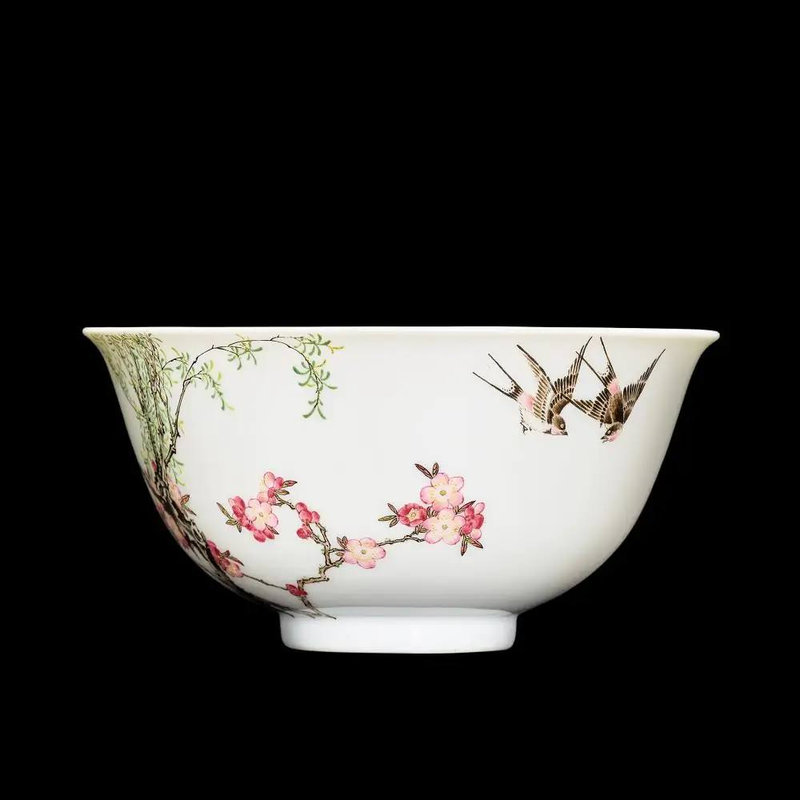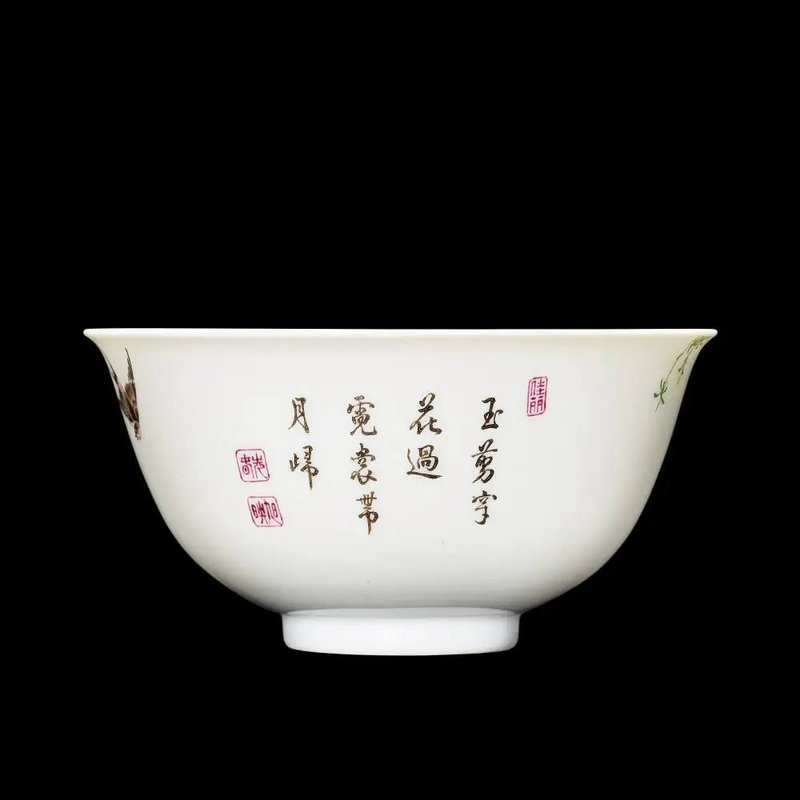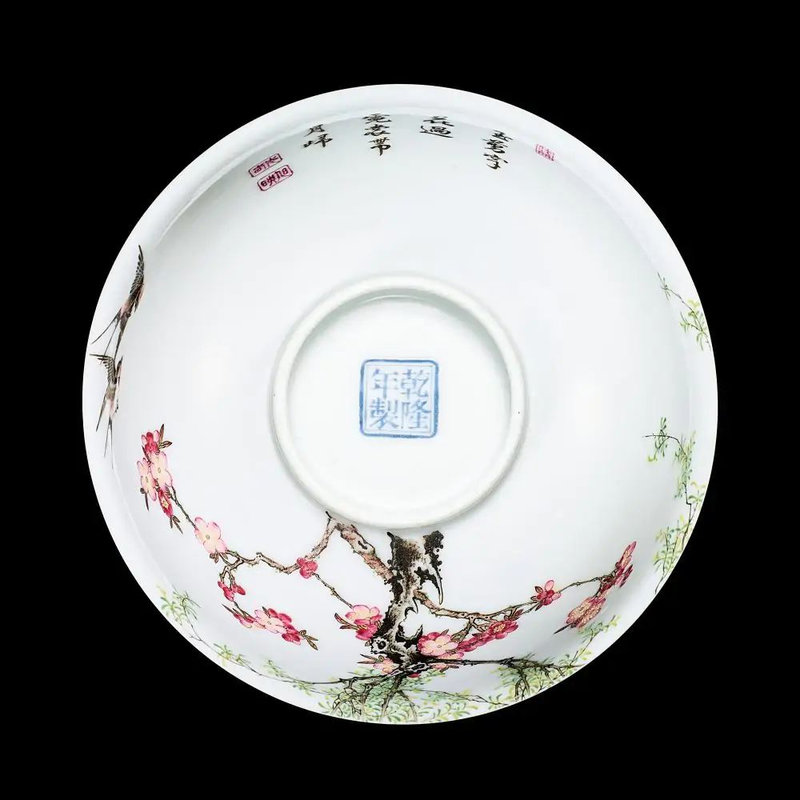An ode to spring, Sotheby's Hong Kong to offer The Dr. Alice Cheng Falangcai Bowl
HONG KONG.- Sotheby’s Hong Kong Chinese Works of Art 2023 Spring Sales Series will take place on 8 April, led by the Dr Alice Cheng falangcai bowl. The masterpiece will be offered in a stand-alone single lot auction and is expected to fetch in excess of HK$200 million/ US$ 25.5 Million. Dr Alice Cheng’s Falangcai bowl ranks among the most legendary pieces ever to have been offered at auction and broke a world record for Chinese art when it was sold in 2006 for HK$151,320,000. It is a gem of Imperial porcelain, the delicate, creamy white body having been painted by master court enamellers in Beijing in close proximity to the Qianlong emperor. The superb painting of two loving swallows beside a flowering apricot tree intertwined with a willow tree is complemented by a short poem evocative of the spring. During the latter years of the Qing dynasty in the late 19th century, the bowl and its pair entered the collection of Captain Charles Oswald Liddell, whose collection was sold in 1929. Thereafter, one bowl entered the collection of Sir Percival David, the greatest private collector of Chinese Imperial porcelain in history, and is today the pride of the British Museum. The present bowl meanwhile entered the collection of Charles Ernest Russell, Barbara Hutton, J.T. Tai, Tianminlou, Robert Chang and since 2006 has been the crown jewel of the celebrated collection of Dr Alice Cheng.
Nicolas Chow, Chairman of Asia and Worldwide Head and Chairman of Chinese Works of Art, Sotheby’s, commented: “The unassuming beauty and exquisite quality of this outstanding falangcai bowl showcases the discriminating taste of Dr Alice Cheng and her passion for collecting only the very finest Qing Imperial porcelain, which led her to break multiple records in the field of Chinese art over the last twenty years. This masterpiece of Chinese art, among the most celebrated objects ever to come to market at Sotheby’s, carries an illustrious history of ownership circling the globe over more than a century, and yet a new chapter is about to begin in its long, distinguished history.”
Falangcai as the Rarest and Most Sought-After Imperial Ware
Falangcai (‘foreign colours’) – porcelains painted in the imperial workshops of the Forbidden City in Beijing– are the rarest and most sought-after wares of the Qing dynasty (1644-1911). The idea that porcelains from Jingdezhen could be enamelled close to the imperial living quarters, to enable the emperor to follow and examine the results first-hand, was initiated by the Kangxi Emperor (r. 1662-1722) late in his reign. Pieces painted with such sparse and refined motifs from nature as seen on the Dr Alice Cheng bowl, ‘wrapped’ around the vessel like an unrolled handscroll, were produced in Beijing for only a very short period. They are characteristic of the Yongzheng reign (1723-1735) and the present bowl with its imperial Qianlong reign mark (1736-1795) must date from the earliest years of that period. In quality and decorative style, it would be difficult to distinguish from Yongzheng examples. This small group of porcelains, today mostly preserved in the National Palace Museum, Taipei, represents the peak of painting on porcelain, an artistry that was never surpassed – or even equalled – in the imperial kilns at Jingdezhen under the supervision of Tang Ying.
An Ode to Spring
Bird and flower paintings were one of China’s classic painting genres, popular at the court since at least the Tang dynasty and firmly established by the Song dynasty, when the subject of swallows and either apricot or willow trees appears for the first time. In the Yongzheng period, bird-and-flower motifs became a favoured topic for falangcai porcelain in the wake of court painter Jiang Tingxi’s influential (1669-1732) Manual of birds produced during the Kangxi period. The motif of two swallows, a fruit tree in bloom and a willow sprouting its first leaves, on this bowl heralds the advent of spring. As though it is an unrolled handscroll wrapped around the exterior of the bowl, the opposite side is inscribed with a colophon taken from a poem said to have been commissioned by the Wanli Emperor (r. 1573-1620). It reads: 'Yu jian chuan hua guo, Ni chang dai yue gui'. ‘Scissors of jade cut through the flowers, Like rainbow garments brought back from the moon.’ and thereby compares the swallows’ graceful movements to dancing motions of goddesses. Swallows often fly or perch in pairs and even if perhaps not mating for life, they are known to stay close together, to build their nests and raise their young together, and thus symbolise a loving couple.
The seals before and after the colophon are often seen on Yongzheng pieces and rarely on Qianlong marked falangcai. A pair of larger bowls bearing Yongzheng marks in the collection of the National Palace Museum Taipei and painted with a different composition of the same subject are recorded to have been submitted in 1734, which suggests that only a couple years separated the production of the present bowl and the Taipei bowls. It is likely that the two pairs of bowls would have been painted by the very same court enameller at the Forbidden City.
Illustrious History of Ownership
Endowed with a most remarkable provenance, the bowl can be traced back to the late Qing dynasty when it belonged as one of a pair to Captain Charles Oswald Liddell (1854-1941), who went to China in 1877 and formed his collection during his time there. The pair of bowls was split at a sale at Bluett and Sons, London, in 1929 when it was acquired by Charles Ernest Russell (1866-1960) of King’s Ford – and its counterpart The Hon. Mounstuart Elphinstone and later entered Sir Percival David’s collection in 1935 or earlier. Between 1929 and 1956, the bowl entered the collection of Barbara Hutton, (1912-1979), heiress of the Woolworth empire, and was sold at Sotheby’s in 1971 to J.T. Tai (1911-1992), who then sold it again at Sotheby’s in 1985 to Robert Chang, most probably on behalf of S.C. Ko (1911-1992) of the Tianminlou. Between 1987 and 1993, the bowl entered the collection of Robert Chang until it was sold at auction in 2006, when his younger sister, Dr Alice Cheng, bought it for the then record sum of HK$151,320,000.
Few collectors in recent history have enlivened the Hong Kong salerooms to the same extent as Dr Alice Cheng, and her dramatic entrance at an auction often heralds a new record price for Chinese porcelain. With great passion and style, Alice has assembled since the late 1990s a formidable collection of imperial Chinese porcelain that reflects her impeccable taste. Her discriminating eye has, over the years, mostly focused on the finest wares of the Kangxi, Yongzheng and Qianlong periods, the Qing dynasty’s greatest emperors. When asked what motivates her acquisitions, Alice will say, “I buy what I like.” Indeed, most of the objects that grace her collection were acquired with passion and the sharpest instinct.
Dr Alice Cheng was born in Shanghai and grew up surrounded by fine objects. Her grandfather, Zhang Jiru, was a famous carver who Empress Dowager Cixi once even commissioned to work. Her father, Zhang Zhongying, was a celebrated antique dealer, in whose footsteps her brother Robert would later follow and build the illustrious career that we know in the field of Chinese art. Alice, a free spirit, went on to build an extraordinary career in business and take an active role in various social issues. She is also very well-known in the world of philanthropy, generously supporting causes in Hong Kong and the mainland, such as improving cultural development, education, health, and wellness of ethnic minorities and fighting poverty. Alice Cheng has devoted much of her resources and time to charitable causes.

/https%3A%2F%2Fprofilepics.canalblog.com%2Fprofilepics%2F1%2F0%2F100183.jpg)
/https%3A%2F%2Fstorage.canalblog.com%2F03%2F02%2F119589%2F96711876_o.jpg)
/https%3A%2F%2Fstorage.canalblog.com%2F11%2F31%2F119589%2F94773502_o.jpg)
/https%3A%2F%2Fstorage.canalblog.com%2F20%2F83%2F119589%2F94772815_o.jpg)
/https%3A%2F%2Fstorage.canalblog.com%2F26%2F72%2F119589%2F75604929_o.jpg)
/https%3A%2F%2Fstorage.canalblog.com%2F59%2F60%2F119589%2F26458628_o.jpg)





/http%3A%2F%2Fstorage.canalblog.com%2F32%2F07%2F119589%2F127181615_o.jpg)
/http%3A%2F%2Fstorage.canalblog.com%2F24%2F33%2F119589%2F121426289_o.jpg)
/http%3A%2F%2Fstorage.canalblog.com%2F53%2F83%2F119589%2F111622311_o.jpg)
/http%3A%2F%2Fstorage.canalblog.com%2F89%2F74%2F119589%2F128203838_o.jpg)